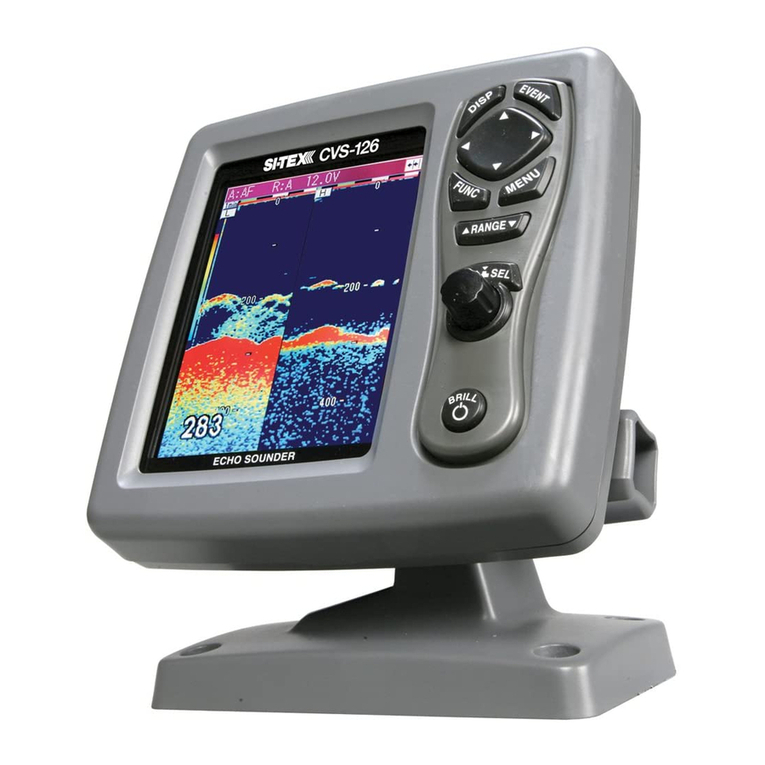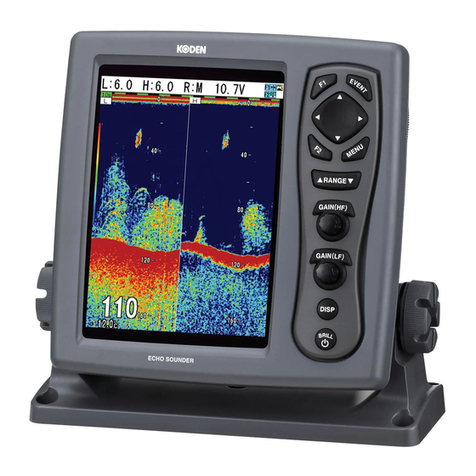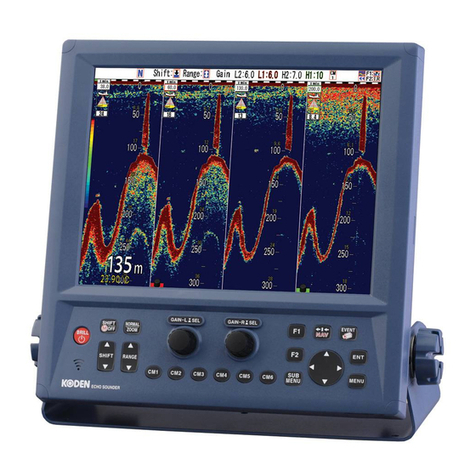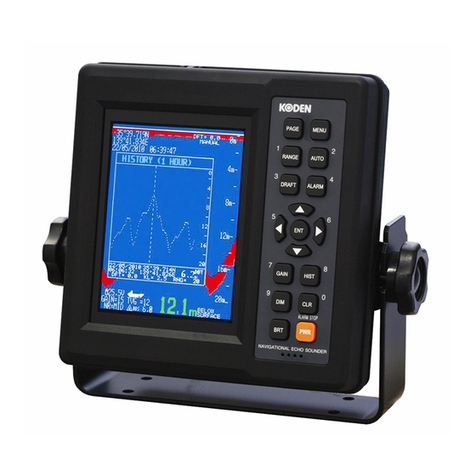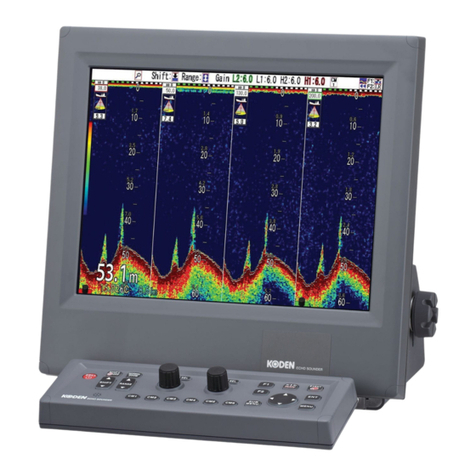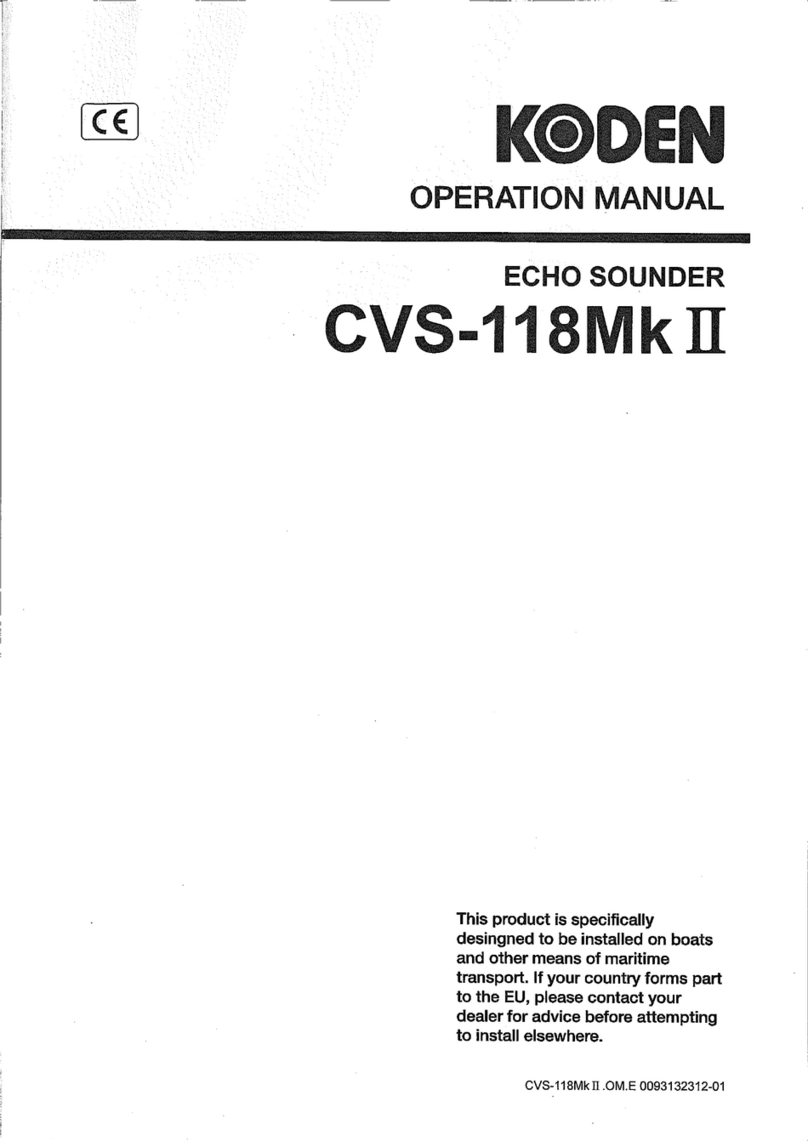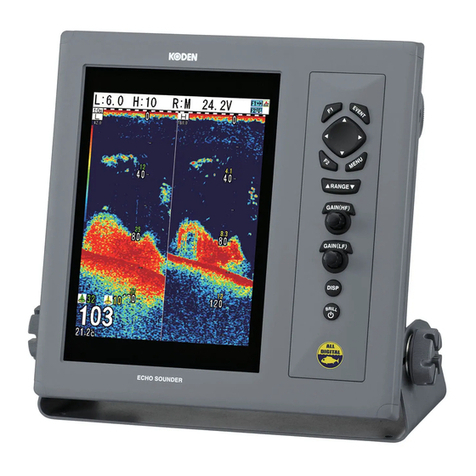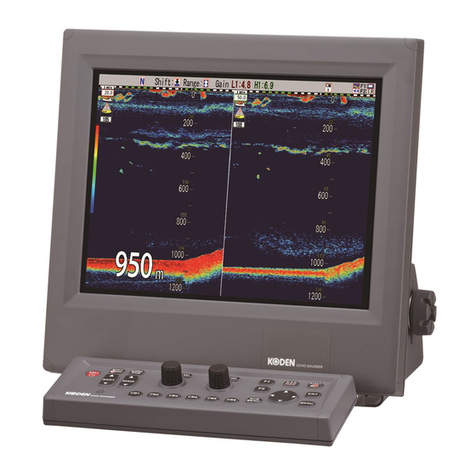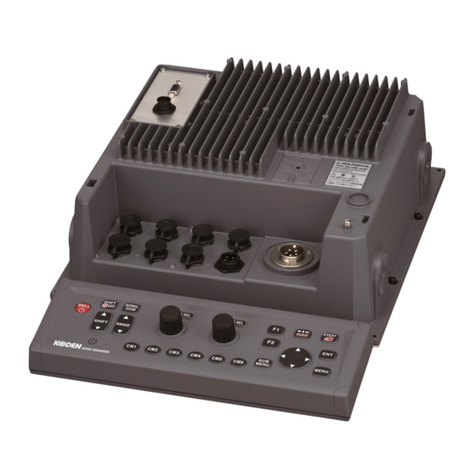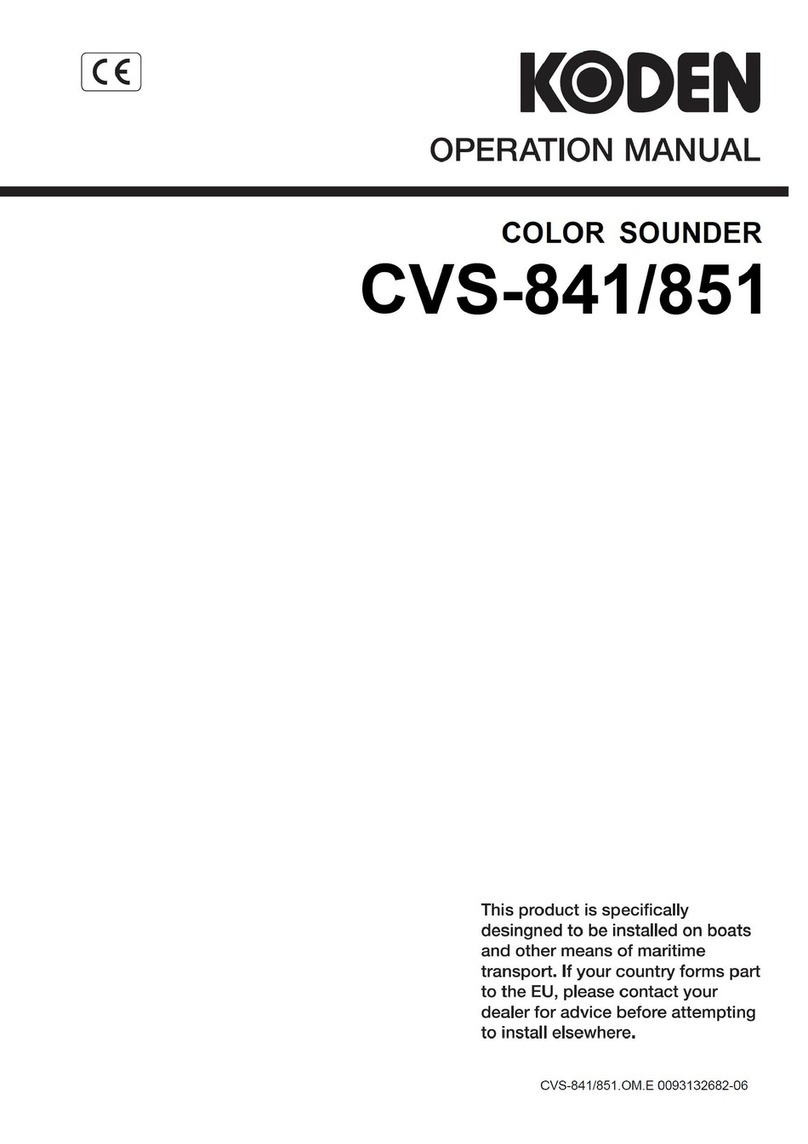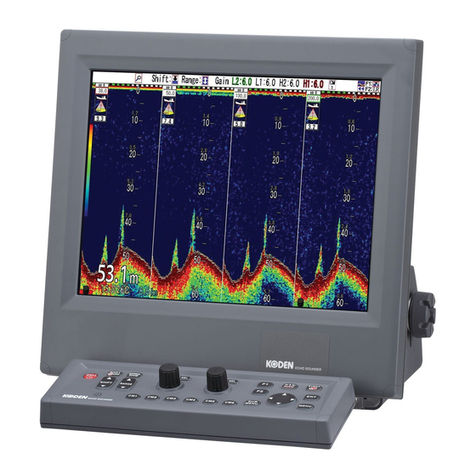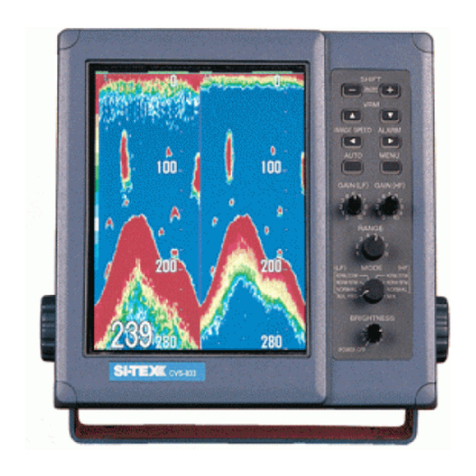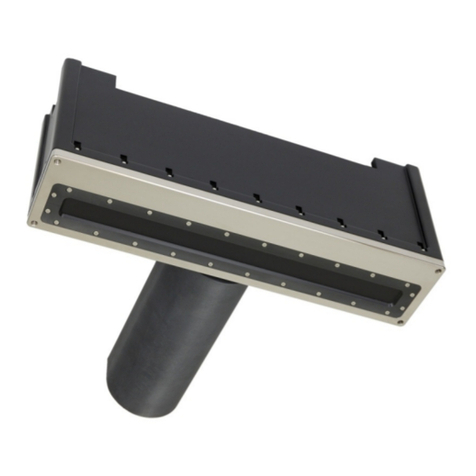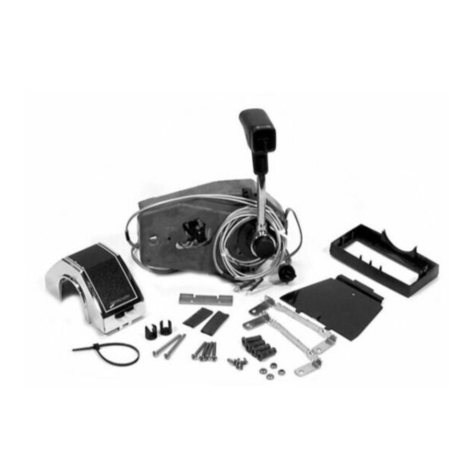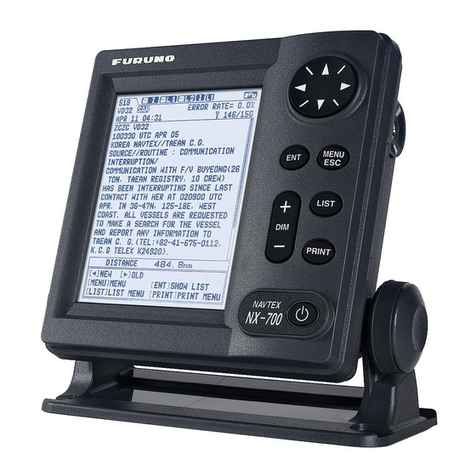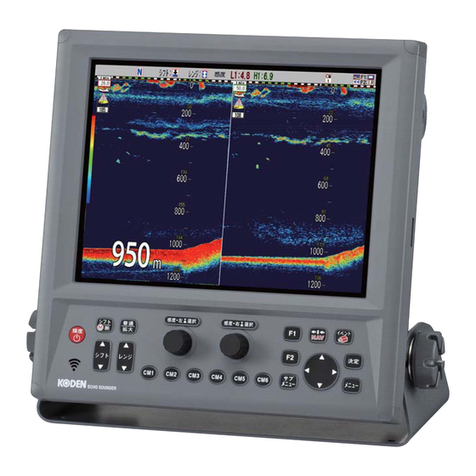
CVR-010
List of Figures and Tables
(continued on next page)
1
1. List of Figures and Tables
Figure No. Description Page
3–1 Password Entry Window 5
3–2 Entering Password 5
3–3 Password Initialization Window 6
3–4 Changing/Removing Password – Step (1) 6
3–5 Changing/Removing Password – Step (2) 6
7–1 Typical Full–Color Echogram Display 14
7–2 Initial Assignments of Echo Colors 15
7–3 Time Marker Interval – Example 16
7–4 One–Minute Time Calibrations 17
7–5 Relative Location of Transducer 18
7–6 Control Panel 19
7–7 Indication of Activating Range Selection Function – Example 20
7–8 On–Screen Operating Parameter Indication – Example 20
7–9 Parameter Indication in Manual Control Mode – Example 21
7–10 MAIN MENU 22
7–11 Parameter Indication in AUTO and MANUAL Control Modes – Example 23
7–12 Variable Range Marker – Example 24
7–13 Soundings History Window – Example 25
7–14 Depth Range Arrangement 26
7–15 Automatic Depth Range Selection – Example 27
7–16 On–Screen Indication of Automatic Control Mode 27
7–17 Initial Assignments of Bottom Echo Colors 28
7–18 Initial Echo Dynamic Range 28
7–19 Display of Multiple Bottom Echoes 29
7–20 Typical Display of Shallow Water Echoes 30
7–21 Parameter Indication for Manual Gain Adjustment 31
7–22 Adjusting TVG Level – Example 31
7–23 Parameter Indication for Manual TVG Adjustment – Example 32
7–24 Echo Sounder Screen with HISTORY Window Opened – Examle 33
7–25 Soundings Data History Window – Example 34
7–26 Typical Echogram Screen with LOG Window Opened 35
7–27 Setting Alarm Depth – Example 37
7–28 Visual Indication of Active Depth Alarm – Example 37
7–29 Visual Indication of Active Bottom–Missing Alarm 38
7–30 Visual Indication of Active Power Failure Alarm – Example 39
8–1 MAIN MENU 40
8–2 Transducer Draft 41
8–3 Entering Transducer Draft 41
8–4 On–Screen Indication of Transducer Draft 41
8–5 Selecting Depth Reference Indications 42
8–6 Alarm Depth Setting Indication – Example 42
8–7 Adjusting Echo Threshold Level – Example 43
8–8 Effect of Echo Threshold on Echogram – Example 43
8–9 Selecting Noise Reduction Levels 44
8–10 Noise Reduction Level Indication – Example 44
8–11 Adjusting White Line Level – Example 45
8–12 Typical White Line Echogram 45
8–13 Selecting Time Scales 46
8–14 Soundings Data History Window – Example 46
8–15 Activating Echo Sounder Simulator 47
8–16 Indication of SIMULATION Mode – Example 47
8–17 Selecting Types of Echo Display 48
8–18 Accessing INSTALLATION SETTINGS Options 49
8–19 Initial Echo Colors Assignments 50
8–20 Accessing ECHO COLORS Submenu 50
8–21 Color Sample Scale 51
8–22 Accessing DEPTH UNIT Submenu 52
8–23 Initial Echo Dynamic Range 53
